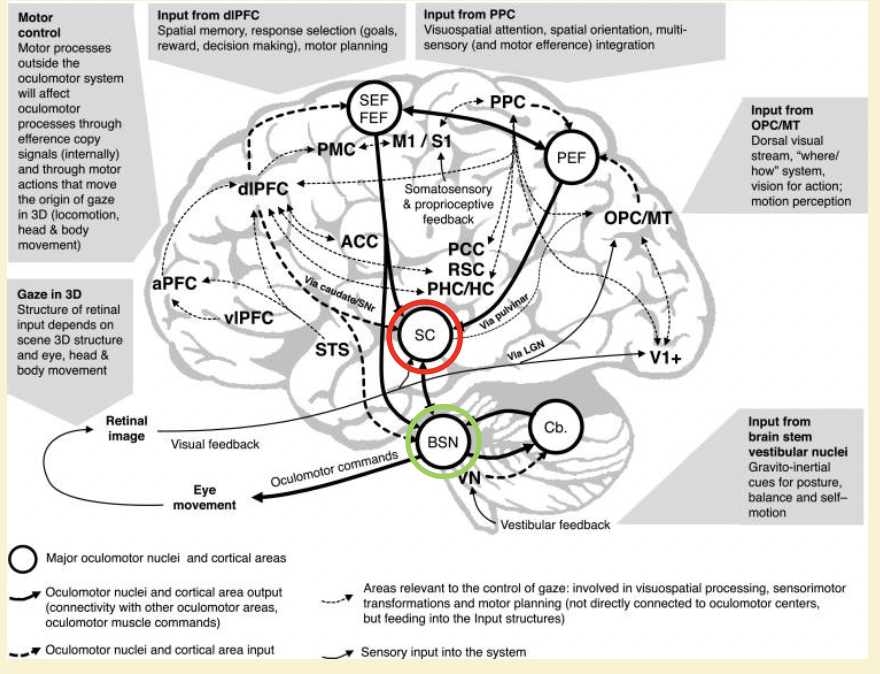cognitive horizons 3
1/17
Earn XP
Description and Tags
eye movements, attention and cognition
Name | Mastery | Learn | Test | Matching | Spaced |
|---|
No study sessions yet.
18 Terms
physiologically defined modules
defined in terms of what they process, and described in terms of their precise localisation
functionally defined modules
unconcerned with localisation, modules are hypothetical (theoretical, functionally defined)
Marr: different levels of analysis from physiology to computational accounts
not all phenomena can be explained at all levels. this can result in: physiologically plausible models that dont account for higher level cognitive functions, functional models that are unconstrained by physiology
evaluating theoretical concepts and empirical findings in cognitive neuroscience
integrating a wide range of evidence gives a better understanding of psychology. developing complex ideas and solving difficult problems is challenging and time consuming but also extrmeely rewarding and fun
eye movement control- the bigger picture
provides an insight into the relationship between biolgoy and cognitive psychology and an opportunity ti evaluate the contribution of neural mechanisms to higher cognitive functions
physiology of saccade generation
lots of different parts involved- superior colliculus deep insdei of brainstem, input from high level areas feed inot superior colliculus which feed into brain stem generator

brainstem saccade generator
firing of the pause and burst cells in the brainstem sacade generator ultimately determines firing of the motor neurones controlling when and where the eyes move
pause cells
stop firing 5-15 ms before and then during saccade, regular firing during fixation. receive inputs from the superior colliculus determining when the eyes move
burst cells
burst of activity just before and during saccade, cells specific to size and direction. recieve input from superior colliculus determining where the eyes move. silent before fixation and fire during saccade
motor neurone
pulse- step change in firing rate directly triggers saccade
superior colliculus
has low level input (bottom up) and higher level input. 3 dimensionla model- deep layer at bottom, intermediate layer and superifical layer at top
key inputs of superior colliculus
inputs: upper layers (bottom up, superficial layers)- visual projection from the retina and the visual cortex
lower layers (top dpwn, intermediate layers)- multi-sensory, higher cognitive influences
fovea
represented within central rostral pole (fixation neurones) and the 2 visual fields are topographically mapped within the left and right areas of the superior colliculus
superior colliculus: mapping
maps of visual space (superficial/ intermediate layers)
maps oculomotor space: cells soecific to direction and size of saccades (electrical stimulation triggers sacades)
deep layers of superior colliculus map oculomotor space, such that cells fire depending on the direction and size of saccades
Findlay and Walker
separation of when/ where pathways, higher level inputs incorporated all combine inot where and when we move our eyes
independence account
sequential attention model
pre-motor theory